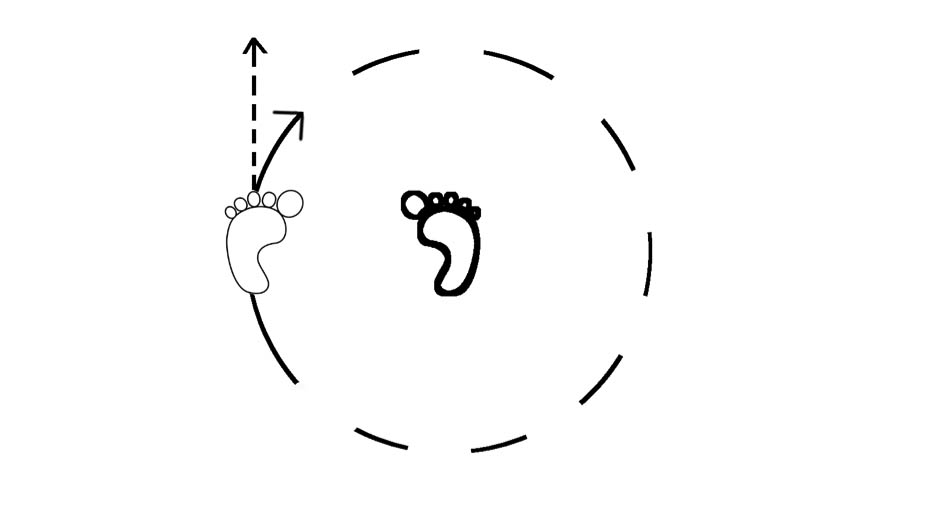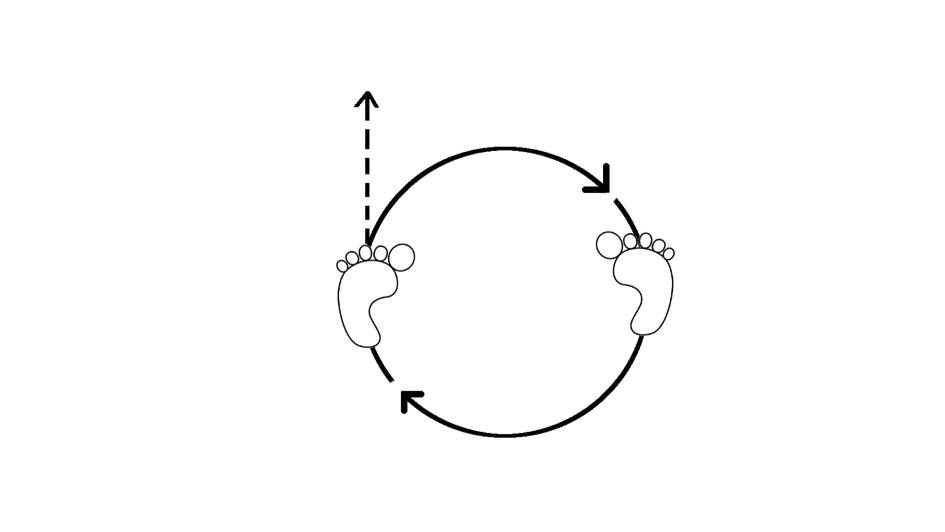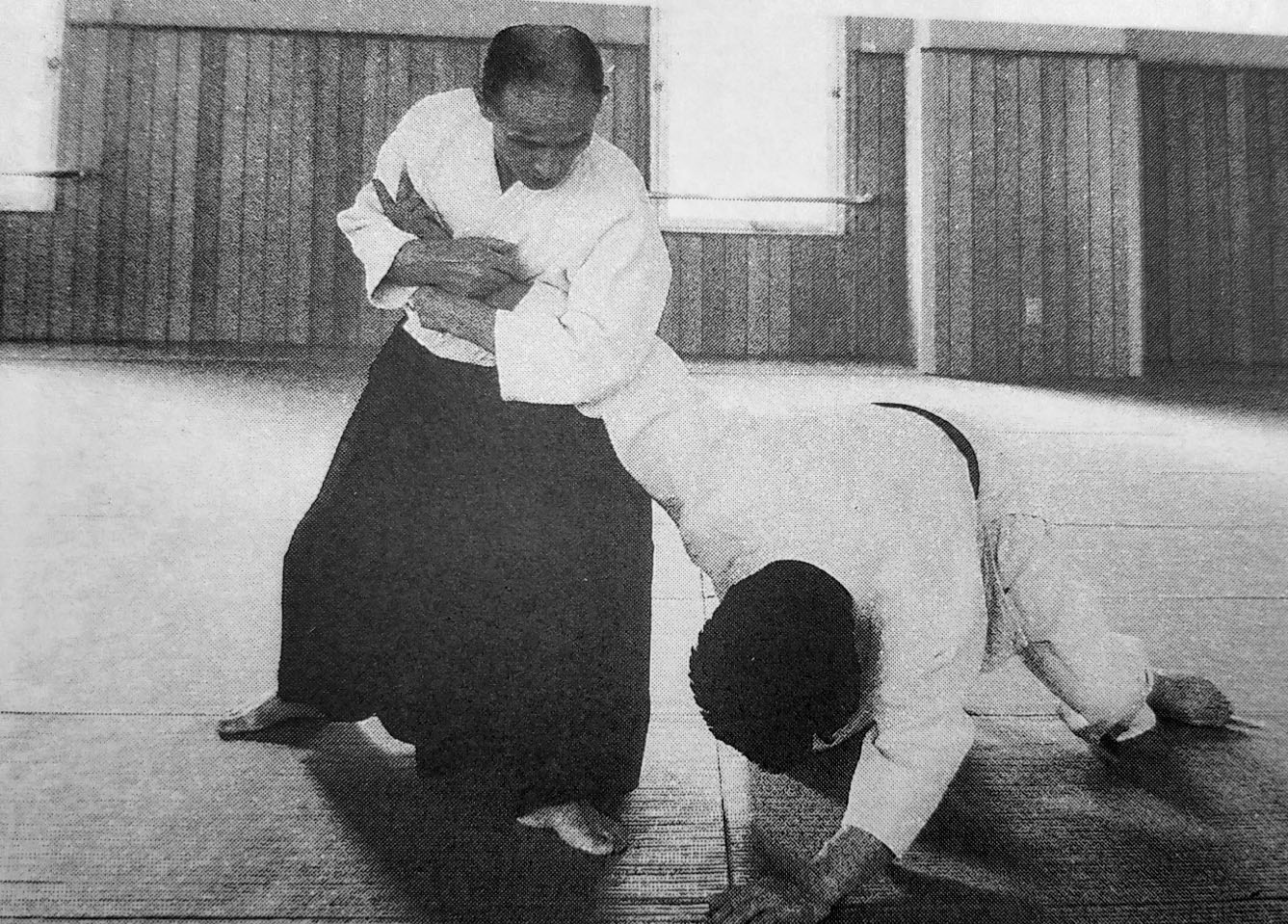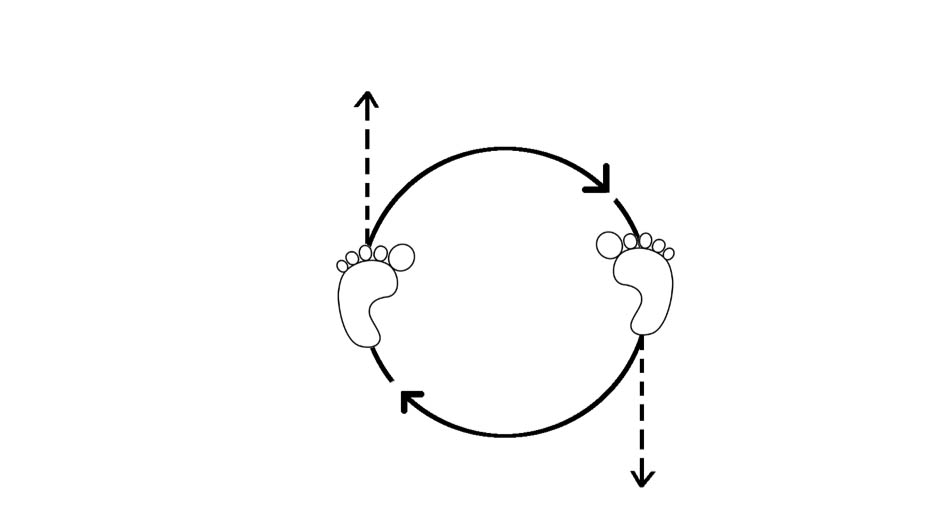Tai sabaki – by Dick Willems
Because of the Corona-virus control measures, there are no Aikido classes at Aikidojo Amsterdam the coming week. But does this mean you can’t train? Absolutely not! Although it’s often said it takes two to do Aikido, there are plenty of exercises you can do by yourself. Even though you’re not going to be able to lock up your training buddies for a while, there’s still plenty you can work on. It might even be a good idea to do this when we get back to our regular schedule!
This week we’re going to take a look at our fundamental footwork, in Japanese terms: tai sabaki. As you can see here, you’re required to demonstrate a couple of tai sabaki in order to pass your sixth kyu test in our dojo, the first exam you’ll likely take. The fact that tai sabaki is part of the sixth kyu requirements does notmean that it’s easy! Taisabaki is a key component in every Aikido technique. So if your tai sabaki sucks, all your techniques will suck too.Tai sabaki literally means body management, and in Japanese martial arts usually refers to body movement. Again, like in our previous installment of this blog, the implication is that your entirebody moves, not just a couple of disconnected parts.
This means that when practicing tai sabaki, you have to pay attention to body parts that are “ along for the ride”. In other words: while moving, you have to develop a sensitivity to identify parts of your body that aren’t contributing to your tai sabaki. And you can develop this sensitivity by practicing alone.
Here’s some ideas to keep in mind while practicing.
No leaning
To be clear: full body movement does notmean that you lean into your partner! To understand why this is so, imagine that your partner suddenly disappears in the middle of this exercise. If you’re leaning into your partner, you’ll fall flat on your face! This is something that becomes obvious when practicing alone, since there’s nothing to lean on.
Mind your posture
You can check this before a mirror. In Aikido, your posture is supposed to be erect; your spine should be stretched out from top to bottom. It doesn’t have to be perfectly straight (in fact, that would probably be bad for you), but you should feel some extension there.
Straighten your shoulders
If your posture is like most people’s, you should draw back your shoulders a bit. Don’t overdo it though. Checkpoint: if you raise your hands above your head and let them drop forward, your hands should remain an equal distance apart. If you accidentally hunch your shoulders, they’ll come closer together as they drop.
Don’t overbend your knee
Some people tend to bend their knee too much. The rule of thumb is that, maintaining correct posture, you have to be able to see your toes from over your knee. If you can’t, your bending your knee to much. This has two downsides: you’ve lost mobility and you’ll damage your knees over time.
Pay attention to your opposite side
This is a bit complicated to explain (which is why it took me longer to write this, also because of my deficient skills in drawing). Let’s first consider the statement that in Aikido, we strive to move in a balanced and centered manner. This means that your weight should be equally distributed among your feet and your center of gravity should be between your feet.
Now let’s take a look at ‘normal’ movement: a step (or, tai sabaki irimi if you will). What most people do is they shift their weight onto one leg and then swing their leg forward (see below, the thick line on the foot means that all the weight is on that foot).

As you can see, this way of stepping is not centered. If all the weight is on one leg, this means the center of gravity can never be in the middle.
So how can you step and remain centered? The answer is pretty complicated, but it involves paying attention to your opposite side. That means that if you want to step forward in a centered way, necessarily your opposite side should feel like there is some backwards force on it, like below.

See how the center of the circle is neatly between the feet?
So if you want to practice tai sabaki, pay attention to the following:
- Tai sabaki irimi: as you come forward with one side, pay attention to your “support” side coming back
- Tai sabaki tankan: as you turn backwards with one side, pay attention to your “support” side coming forward
- Tai sabaki irimi tankan: as you step forward and then turn, pay attention to your support side coming backwards and then forwards.
Pretty complicated, right? As I said at the start of this entry, the fact that tai sabaki is a sixth kyu requirement doesn’t mean it’s easy. In fact, in Japanese martial arts you usually learn the most complicated things first, so you can practice them the most. So if you’re bored with your social distancing during this pandemic, it’s probably a good idea to go over the sixth kyu requirements again and ask yourself what you are supposed to learn from this.
In the beginning stages, we learn Aikido by imitating our teachers, and that will keep you busy for a couple of years. It’s an important phase, but it’s also a phase you’ll have to transcend at some point (I’m not saying I’m there, but I definitely don’t want to stay at the level I’m currently at). Reflecting on the basics, coupled with critical self-evaluation, will help you in due time to build up a profound understanding of Aikido.
Bonus section: hiji kime osae/ hiji shige/rokkyo
Now that we’re talking about opposite sides, it might be interesting to consider this is the context of a technique, in this case the waza of many names: rokkyo (AKA hiji kime osae, hiji shige, ude hishige). It’s the lock pictured below (by the way, this is Gozo Shioda sensei, the founder of Yoshinkan Aikido):

In our dojo, we finish this lock in two ways: omote (step forward with the back leg) and ura (step backwards with the front leg). Notice that the position of the lock on the arm is centered: Shioda sensei has both arms in front of his body and the elbow lock is right in front of his torso). If you would take your finishing step in an uncentered way, your center of gravity would no longer align with the position of the lock.
Notice that if you take a centered step, you don’t have this problem. Additionally, if you’ve practiced centered stepping, omote and ura are suddenly way more similar. They’re basically the same move, resolved in a different way.

This one example of how tai sabaki is an important component of your technique. In this case, it makes the lock much more convincing for your uke.
That’s it for now folks. I hope you find some value in this entry, and to see you back on the mat in good health soon. Take care!
